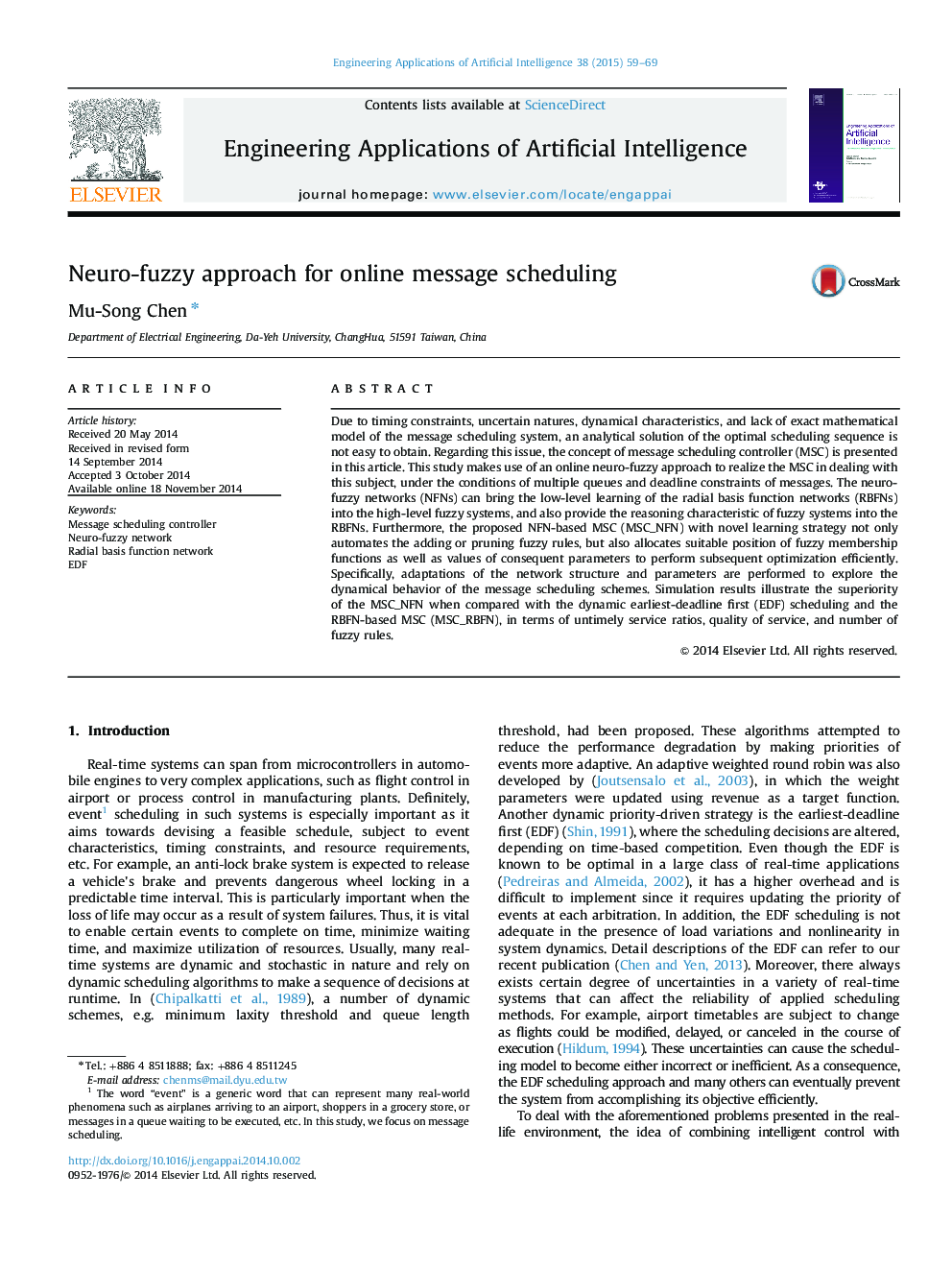| Article ID | Journal | Published Year | Pages | File Type |
|---|---|---|---|---|
| 380511 | Engineering Applications of Artificial Intelligence | 2015 | 11 Pages |
•An online neuro-fuzzy approach is presented to realize the message scheduling controller.•The neuro-fuzzy network provides the reasoning characteristic of fuzzy system into the radial basis function network.•Adaptations of the NFN structure and parameters explore the dynamical behavior of the message scheduling schemes.
Due to timing constraints, uncertain natures, dynamical characteristics, and lack of exact mathematical model of the message scheduling system, an analytical solution of the optimal scheduling sequence is not easy to obtain. Regarding this issue, the concept of message scheduling controller (MSC) is presented in this article. This study makes use of an online neuro-fuzzy approach to realize the MSC in dealing with this subject, under the conditions of multiple queues and deadline constraints of messages. The neuro-fuzzy networks (NFNs) can bring the low-level learning of the radial basis function networks (RBFNs) into the high-level fuzzy systems, and also provide the reasoning characteristic of fuzzy systems into the RBFNs. Furthermore, the proposed NFN-based MSC (MSC_NFN) with novel learning strategy not only automates the adding or pruning fuzzy rules, but also allocates suitable position of fuzzy membership functions as well as values of consequent parameters to perform subsequent optimization efficiently. Specifically, adaptations of the network structure and parameters are performed to explore the dynamical behavior of the message scheduling schemes. Simulation results illustrate the superiority of the MSC_NFN when compared with the dynamic earliest-deadline first (EDF) scheduling and the RBFN-based MSC (MSC_RBFN), in terms of untimely service ratios, quality of service, and number of fuzzy rules.
Graphical abstractThe general framework of the message queue pool (MQP) model, which is controlled by the message scheduling controller (MSC).Figure optionsDownload full-size imageDownload as PowerPoint slide
